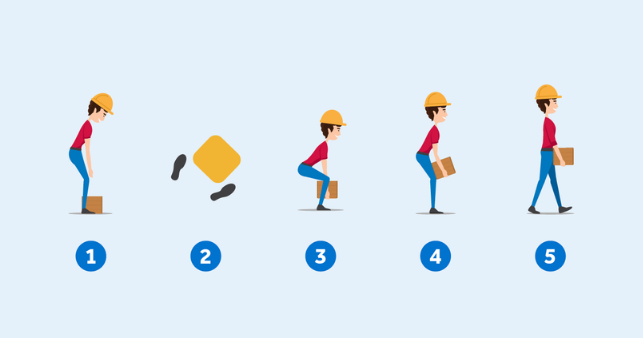
What Does Manual Handling Mean?
Hazardous manual tasks are a common cause of injury within workplaces, and as an employer it is your responsibility to decrease any potential risk to your employees.
What Are Hazardous Manual Tasks In The Workplace?
Hazardous manual tasks include any activity where force is required to push, pull, lift, lower, carry or otherwise move a load or object. When people incorrectly or frequently engage in undertaking a manual task, they put themselves at risk of musculoskeletal disorders (MSD) such as lower back pain, neck pain, problems with shoulders and arms, including forearms, elbows, wrists, hands and fingers. These problems can result from repeatedly stressing the body to undertake a task or can occur as a once off such as lifting a heavy or awkward load.
Preventing Hazardous Manual Tasks Injuries
The most effective way to eliminate or minimise risk of an MSD is to consider the hazards and risks related to a manual task during the design and planning stage of a workplace or a job. During this stage, hazards and risks may be able to be eliminated by being ‘designed out’ before they are introduced into a workplace.
That is, if the hazardous manual task is not necessary, then the task should be ceased, and the hazard therefore eliminated. However, this is not always reasonably practicable and you must therefore consider the means by which the risks from hazardous manual tasks may be reduced by working through the hierarchy of control measures.
The hierarchy ranks control measures from the highest level of protection and reliability to the lowest. Therefore, the control measures may involve a single control or a combination of two or more measures.
As an employer, you have a duty to eliminate hazardous manual tasks wherever possible, or at least lower the risks to as low as practicably possible.
Introducing mechanical aids or making small changes to work processes or procedures which are supported with suitable and appropriate training, can go a long way to minimising the risks.
How to avoid a manual handling injury when lifting?
Follow these steps to reduce the risk of manual handling injuries in your workplace.
Step 1
Plan and check for dangers to yourself or others. Is the destination of the load clear, free from obstruction and within reason?
Step 2
Check your balance and position. Is the load stable, within your weight limits and easy to grip?
Step 3
When lifting items use your legs. Do not jerk when lifting, keep the movement smooth and take a rest if needed.
Step 4
When moving your load, move from your feet. Do not twist and keep the heaviest part of the load against your body.
Step 5
Ensure that others can see you. If required, wear your personal protective equipment (PPE).
If you are uncertain of your obligations when it comes to manual handling, or any other health and safety requirements in your workplace, call Employsure on 1300 651 415. Our professional Advisers can answer any questions you may have.
Click here to download Employsure’s Manual handling poster.
